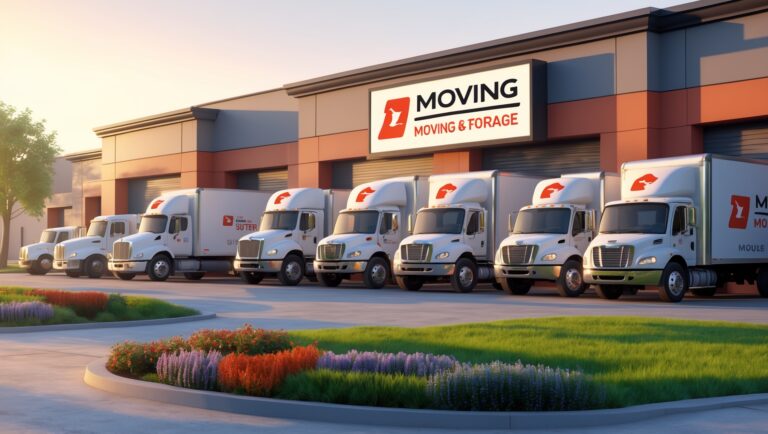How to Optimize Storage Unit Turnover: Cleaning, Repairs, and Fast Preparation
Introduction: Why Storage Unit Turnover Efficiency Matters
For storage facility owners and managers, vacancy is lost revenue. Every day a unit sits empty is a day it’s not earning. Efficiently turning over storage units—cleaning, repairing, and prepping them for new renters—directly impacts your bottom line and reputation. But turnover isn’t just about speed: it’s about consistency, quality, and presenting each customer with a unit that’s clean, functional, and move-in ready. In this detailed guide, we’ll cover how to create a robust turnover protocol, the best tools and cleaning supplies for the job, practical repair checklists, and proven ways to minimize downtime between tenants. Whether you’re managing a single location or a multi-facility operation, optimizing your turnover process will help you boost occupancy rates, reduce complaints, and strengthen your business’s competitive edge.
Understanding the Storage Unit Turnover Process
What Is Turnover and Why Is It Critical?
Turnover refers to the series of tasks completed after a tenant vacates their storage unit and before a new customer moves in. This typically includes:
- Inspecting the unit for damage or left-behind items
- Cleaning and sanitizing all surfaces
- Performing minor repairs or maintenance
- Documenting the unit’s condition
- Prepping the space for the next tenant (locks, signage, etc.)
Efficient turnover reduces vacancy time, enhances customer satisfaction, and protects your investment by catching issues early. A sloppy or delayed turnover process can result in negative reviews, pest infestations, or costly repairs down the road.
Step 1: Immediate Post-Move-Out Inspection
Why Speed Matters
As soon as a tenant vacates, inspect the unit within 24 hours. Early inspection helps you:
- Quickly address any abandoned items (and follow legal protocols for disposal)
- Identify damages while still fresh (and, if needed, charge the former tenant accordingly)
- Prevent pests or lingering odors from affecting neighboring units
Inspection Checklist
- Check for left-behind belongings—photograph and document if found
- Assess for obvious damage: door tracks, locks, walls, floor, and ceiling
- Look for evidence of moisture, leaks, or mold
- Note any pest activity or droppings
- Check lighting and electrical outlets (if present)
- Test the roll-up or swing door for smooth operation
Document all findings with photos and descriptive notes. Use a standardized digital form or checklist for consistency.
Step 2: Efficient Cleaning Protocols
Recommended Supplies and Equipment
- Heavy-duty broom and dustpan
- Industrial vacuum (for dust and fine debris)
- Mop and bucket or wet/dry shop vac (for spills or stains on concrete)
- All-purpose cleaner and disinfectant spray
- Microfiber cloths and sponges
- Gloves, masks, and protective eyewear
- Trash bags and a portable trash can
- Step ladder (for high corners, light fixtures, or vents)
Cleaning Steps
- Remove remaining debris and trash; bag and label any items that may be subject to legal hold
- Sweep the floor thoroughly, paying attention to corners and edges
- Vacuum dust from walls, ceilings, and door tracks
- Spot clean any stains on floors or walls; treat with disinfectant if needed
- Wipe down door handles, locks, light switches, and any control panels
- Sanitize the door interior and touchpoints
- If climate-controlled, clean air vents and check for filters that may need replacement
- Deodorize—use a neutralizing spray rather than strong scents
For units exposed to potential biohazards (e.g., animal waste, mold), follow OSHA-compliant procedures and consider a professional cleaning service.
Step 3: Repairs and Preventative Maintenance
Common Repairs During Turnover
- Fixing or replacing damaged door latches, locks, or handles
- Touching up paint or sealing minor wall cracks
- Resurfacing concrete floors (patching chips or cracks)
- Lubricating door tracks and hinges
- Replacing light bulbs, fuses, or batteries in access control devices
- Ensuring unit numbers and signage are clear and visible
Preventative Steps
- Inspect weather stripping and replace if worn—prevents moisture and pest intrusion
- Check for water pooling around the unit, particularly after rain
- Test smoke detectors or alarm systems (if equipped)
- Review gutters and downspouts near entrances for blockages
Keep a stocked repair kit for minor fixes and establish relationships with local contractors for larger issues (such as electrical or structural work).
Step 4: Preparing the Unit for New Tenants
Final Touches
- Install a new or rekeyed lock if provided as part of your service
- Ensure the unit number is clean, visible, and matches records
- Place any welcome materials, such as facility maps or guidelines, inside the unit
- Test access codes or keys for smooth operation
- Double-check for lingering odors or signs of pests
- Take “move-in ready” photos for your records and marketing
Signaling Availability
- Update your property management software to mark the unit as available
- Sync with your website and third-party listing platforms
- Add “move-in ready” images to online listings for increased appeal
Streamlining Turnover: Tips for Reducing Downtime
Establish a Turnover Schedule
Set clear internal targets—such as turning over a vacated unit within 48 hours. Use scheduling tools or checklists to keep staff accountable and on track.
Train Your Team
- Conduct regular training sessions on cleaning techniques and safety protocols
- Cross-train staff so that absences don’t slow down turnover
- Empower employees to flag minor maintenance issues early
Invest in the Right Tools
- Purchase commercial-grade cleaning equipment for efficiency and durability
- Use color-coded supplies to prevent cross-contamination between units
- Implement software for digital inspections and work order tracking
Outsource When Needed
For large facilities or high-turnover periods, consider outsourcing cleaning or repairs to specialized contractors. Negotiate bulk rates and service-level agreements (SLAs) to ensure quick response times.
Documenting and Tracking Turnover Performance
Key Metrics to Monitor
- Average time from move-out to move-in (per unit)
- Number of units turned over per week/month
- Incidents of missed repairs or cleaning complaints
- Costs associated with turnover (staffing, supplies, repairs)
- Occupancy rate changes post-turnover improvements
Analyze these metrics monthly. Look for trends or bottlenecks and adjust your processes accordingly.
Using Technology for Better Results
- Adopt property management software with maintenance and turnover modules
- Use mobile apps for on-the-spot inspection reports and photo uploads
- Set automated reminders for follow-up maintenance tasks
- Integrate turnover tracking with your accounting system for accurate cost analysis
Special Considerations for Climate-Controlled and Specialty Units
Climate-Controlled Units
- Check HVAC filters and vents for dust or obstructions
- Monitor temperature and humidity controls during cleaning
- Inspect for mold or mildew more thoroughly
- Pay attention to electrical outlets and lighting fixtures
Vehicle and RV Storage
- Examine pavement for oil stains or leaks
- Look for debris that could damage tires or undercarriages
- Ensure security cameras and lighting are fully operational
Wine or Document Storage
- Verify specialty climate controls are accurate and sealed
- Sanitize shelving or racking systems
- Check for signs of pests specific to contents (e.g., silverfish for documents)
Common Turnover Pitfalls and How to Avoid Them
- Delayed Inspections: Schedule daily sweeps of vacated units to prevent delays.
- Inconsistent Cleaning Standards: Standardize your cleaning checklist and audit regularly.
- Missed Minor Repairs: Use a detailed repair log and follow up after each turnover.
- Lack of Documentation: Always photograph and record unit conditions—protects against disputes and claims.
- Poor Communication: Keep your team looped in with digital task lists and shift handovers.
Conclusion: Turnover Excellence as a Competitive Advantage
Optimizing your storage unit turnover process isn’t just about cleaning faster—it’s about building a reputation for reliability, safety, and professionalism. Well-executed turnovers minimize vacancy, catch maintenance issues before they escalate, and ensure every new tenant is welcomed by a spotless, functional unit. With standardized protocols, trained staff, and the right tools, you’ll deliver a consistent customer experience that inspires positive reviews and referrals. Don’t underestimate the power of documentation and technology: digital inspections, photo records, and performance analytics will help you fine-tune your operation, reducing costs and improving occupancy rates over time.
Facilities that prioritize turnover excellence stand out in a crowded market. Your attention to detail today pays off in loyal customers tomorrow. By investing in efficient turnover systems and a culture of accountability, you’ll future-proof your business—making every square foot count, every day. Start with small improvements, track your progress, and watch your facility’s reputation and revenue grow in tandem.






